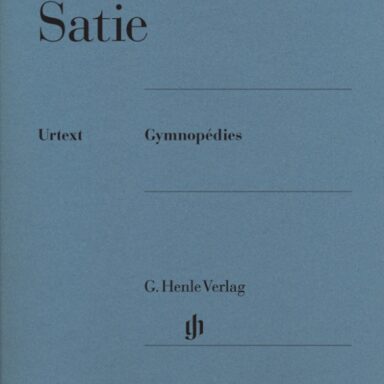
Atmospheres for orchestra
Sin existencias
Solicita una cotización
Descripción
«Atmosphères» famously overturns all traditional categories of Western classical music. There is absolutely no discernible melody, harmony is reduced to the drifting of saturated chromatic clusters, and pulse – or any sense of normal rhythmical articulation – is entirely absent. All habitual structural sign-posts are also missing as is any relationship to standard forms, despite the ghost of a recapitulation towards the work’s end. Instead the listener is confronted with a slow-motion succession of textures, one oozing into the other, where the instrumental sonority seems to have more in common with the dissolves and hums of electronic music than that of a normal symphony orchestra. Tiny traces of influence can just be discerned – perhaps Debussy, a little Richard Strauss, certainly Bartok – though Ligeti’s vision is of startling, indeed radical, originality. (George Benjamin)
Work introduction
Atmosphères famously overturns all traditional categories of Western classical music. There is absolutely no discernible melody, harmony is reduced to the drifting of saturated chromatic clusters, and pulse – or any sense of normal rhythmical articulation – is entirely absent. All habitual structural sign-posts are also missing as is any relationship to standard forms, despite the ghost of a recapitulation towards the work’s end.
Instead the listener is confronted with a slow-motion succession of textures, one oozing into the other, where the instrumental sonority seems to have more in common with the dissolves and hums of electronic music than that of a normal symphony orchestra. Tiny traces of influence can just be discerned – perhaps Debussy, a little Richard Strauss, certainly Bartók – though Ligeti’s vision is of startling, indeed radical, originality.
Another striking element is the work’s independence from dogma which prevailed widely in the contemporary music world of the early 1960s: gone are the percussive, pointillistic textures of serialism, and widespread taboos – like the banning of octaves – are ignored. In the use of solo parts for all the strings, and the divisions of the conductor’s beat into separate metrical strands, the influence of 1950s Xenakis can perhaps be discerned – though the artistic sensibility could not be more different.
Beyond such stylistic concerns the ear can take immediate delight in the way the work moves, how the sound surface glides across registers with subtle shifts in pace and beguiling transformations in timbre. The music flows like lava, buzzes like a swarm of bees, or glimmers like a multitude of tiny Aeolian harps. Commencing with an immense, suffocating blanket of static sound, Atmosphères traverses an almost unbroken arc before eerily drifting into complete silence at its end.
This apparently seamless web of sound is, paradoxically, a collage of independent, discreet compositional modules, all of differing duration and subtly contrasting purpose; these are linked and superimposed in a technique akin to the montage involved in the creation of tape music. Could this powerful degree of internal structure – tied to the highly refined and detailed instrumental writing – explain why this is virtually the only piece of “texture music” from the 1960s which has survived and entered the repertoire? Perhaps it’s simpler to say that Ligeti was a poet in sound of genius, and that this work – a Requiem, like so much of his oeuvre from this period – strikes a very deep note in most listeners from the first hearing. Regardless, there is no question that Atmosphères is one of the most extraordinary utterances from any composer in the 20th century.
George Benjamin, September 2013
When György Ligeti’s Atmosphères premièred at the 1961 Donaueschingen Festival, it caused a sensation. The work’s static iridescence so fascinated its listeners that they demanded an immedediate repeat performance. Ligeti had flung the door wide open to new worlds of sound and structure. Some idea of how revolutionary his work was may be gained from a glance at the study score: narrow and tall, it looks like a miniature skyscraper, with up to 87 staves piled on top of one another, each of them representing one instrumental part. Even now, Ligeti’s soundscape has lost none of its overwhelming effect, having attained popularity through its use as film music for Stanley Kubrick’s 2001: A Space Odyssey.
Especificaciones
| Dimensiones | 42 × 30 × 1 cm |
|---|
Detalles
| ISBN: | 9783702416911 |
|---|---|
| Páginas: | 24 |
| Código editor: | UE11418 |
| Formato: | Partitura |
| Dificultad: | Ninguna |
Productos relacionados
- Libros
- Partituras y Métodos
- Material Didáctico
- Audio/visuales
- Catálogo
-
Mi pedido
-
Mi pedido
No hay productos en tu pedido
-
- Acceder





